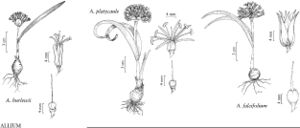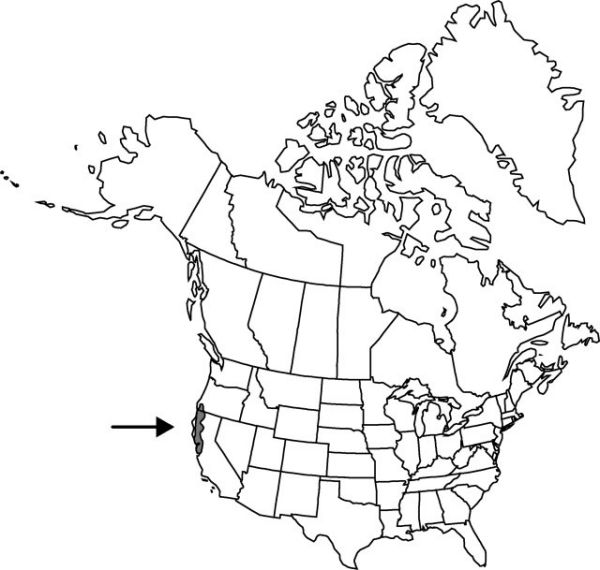Allium falcifolium
Bot. Beechey Voy., 400. 1841.
Bulbs 1–5+, not clustered on stout primary rhizomes, rhizomes absent, increase bulbs absent or ± equaling parent bulbs, never appearing as basal cluster, ovoid, 1.5–2.5 × 1–1.8 cm; outer coats enclosing renewal and increase bulbs, brown to reddish brown, membranous, lacking cellular reticulation or cells arranged in only 2–3 rows distal to roots, ± quadrate, without fibers; inner coats white or pink, cells obscure, ± quadrate. Leaves usually deciduous with scape, withering from tip at anthesis, 2, basally sheathing, sheaths not extending much above soil surface; blade solid, flat, falcate, 8–21 cm × 2–8 mm, margins entire. Scape usually forming abcission layer and deciduous with leaves after seeds mature, frequently breaking at this level after pressing, solitary, erect, solid, strongly flattened, winged distally, 5–25 cm × 1–4 mm. Umbel persistent, erect, compact to ± loose, 10–30-flowered, hemispheric, bulbils unknown; spathe bracts persistent, 2, 6–9-veined, lanceolate, ± equal, apex acuminate. Flowers conic to campanulate, 9–15 mm; tepals erect, reddish purple or dingy white, lanceolate, ± equal, rigid and membranous in fruit, at least inner margins denticulate with minute glands, apex long-acuminate; stamens included; anthers purple or yellow; pollen yellow or white; ovary crested; processes 3, central, low, rounded, broad, margins entire; style linear, equaling stamens; stigma capitate, unlobed; pedicel 8–15 mm. Seed coat dull; cells ± smooth. 2n = 14.
Phenology: Flowering Apr–Jun.
Habitat: Heavy, rocky, clay soils, including serpentine
Elevation: 100–2100 m
Discussion
Selected References
None.

